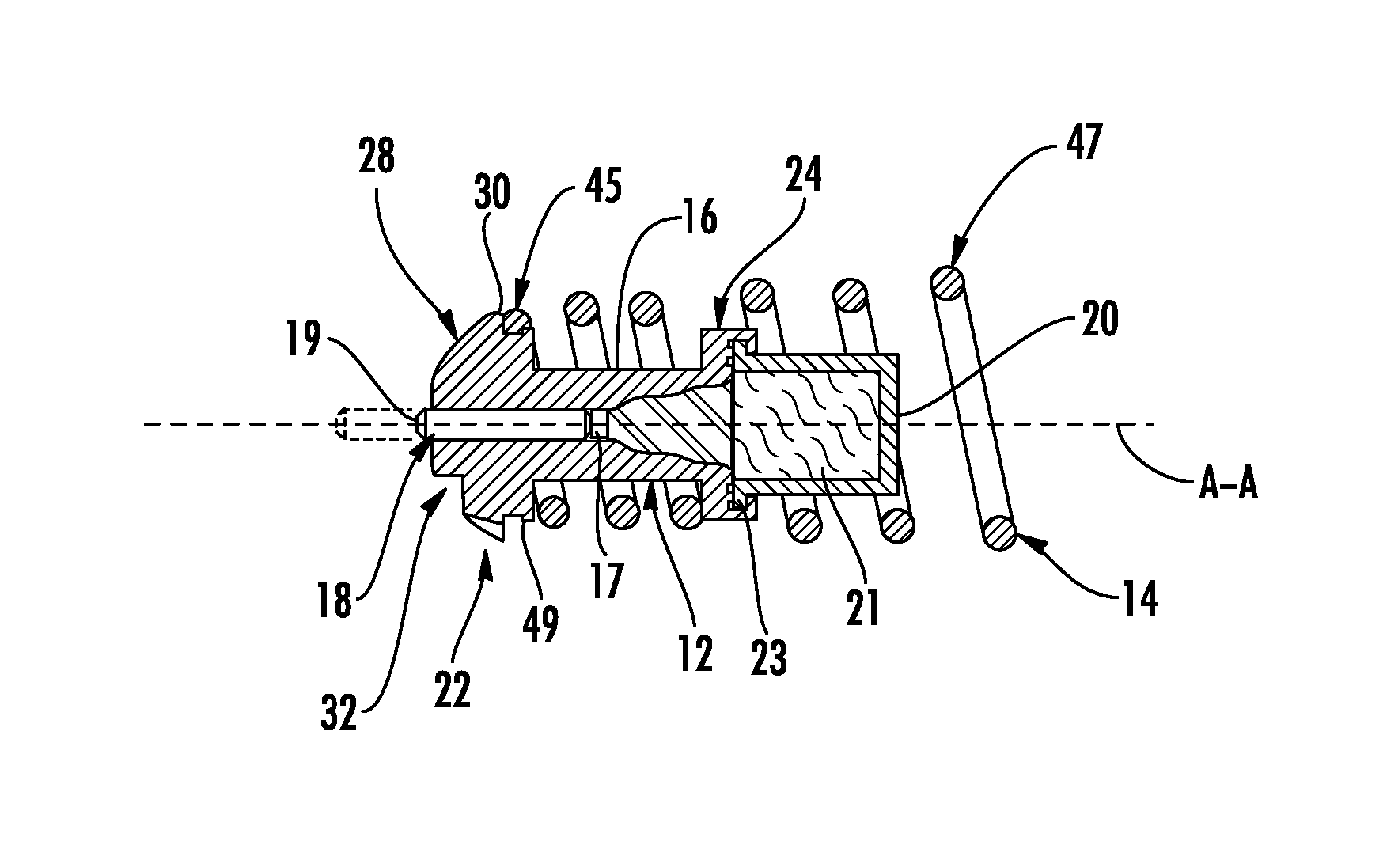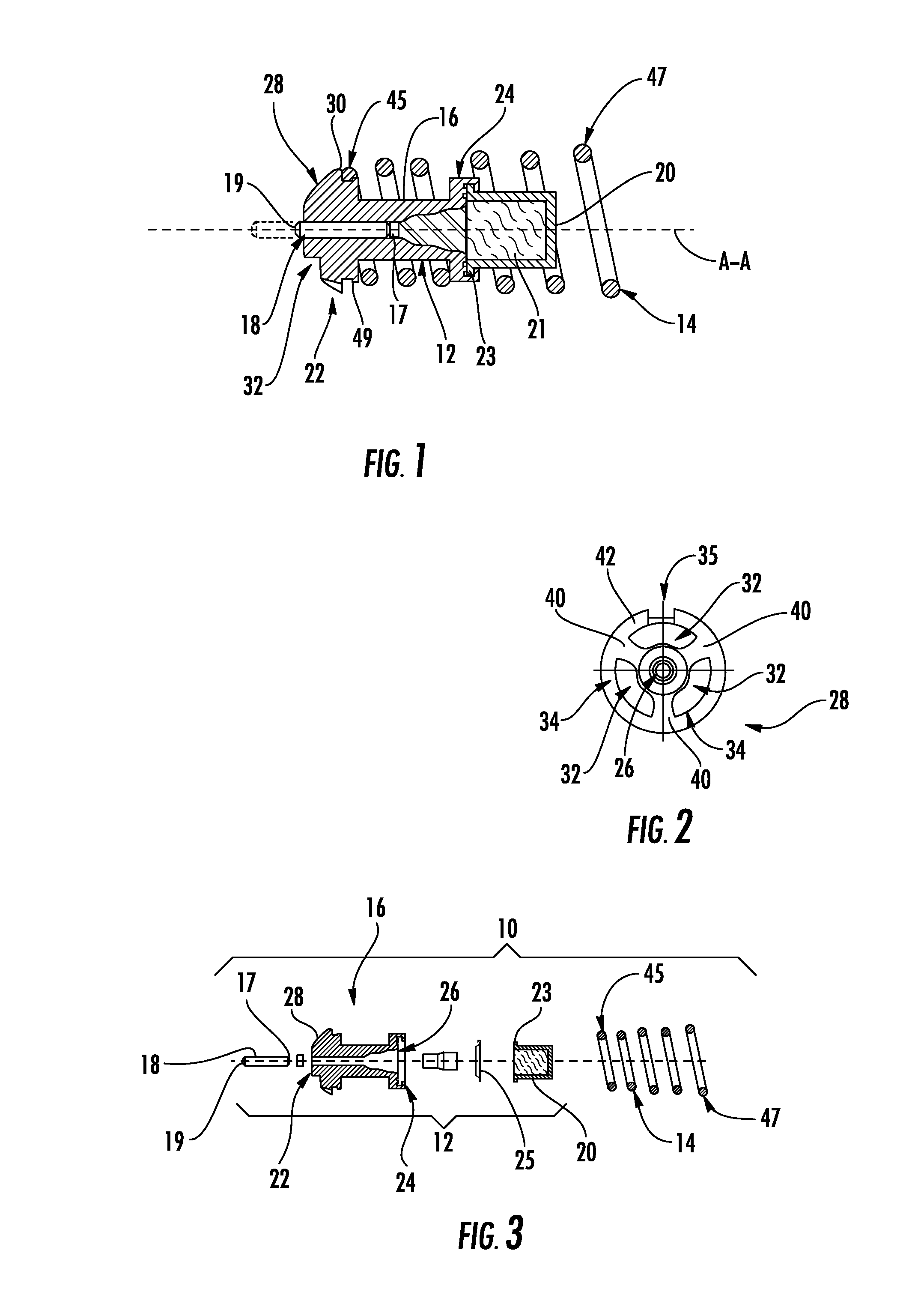Thermally actuated power element with integral valve member
a technology of power element and integral valve member, which is applied in the direction of machines/engines, process and machine control, instruments, etc., can solve the problems of limiting the free space that the actuator may travel, reducing fluid flow, and inhibiting the effective flow of fluid through the system, etc., to avoid the reduction of fluid flow, improve hydrodynamic characteristics, and high pressure
- Summary
- Abstract
- Description
- Claims
- Application Information
AI Technical Summary
Benefits of technology
Problems solved by technology
Method used
Image
Examples
Embodiment Construction
[0026]With reference to the drawings wherein like numerals represent like parts throughout the figures, a thermally actuated power element with integral valve member 10 is disclosed herein. Referring to FIG. 1, the power element 10 has a longitudinal axis A-A, an actuator 12, and a generally cylindrical return member 14. The actuator 12 comprises a guide 16 coaxial with the longitudinal axis A-A, a piston 18, and a generally concave cup 20. The cup 20 contains a thermally active wax pellet 21.
[0027]As shown in FIGS. 1, 2, and 4, the guide 16 has first and second axial guide ends 22 and 24, respectively. The guide 16 defines a generally cylindrical bore 26 between the first and second guide ends 22 and 24. As seen in FIGS. 1 and 3, the cup 20 has a peripheral lip 23 which projects radially outwardly, and the guide second end 24 is crimped around the peripheral lip 23 to attach the cup to the guide 16.
[0028]The piston 18 has axially opposed first and second piston ends 19 and 17, resp...
PUM
 Login to View More
Login to View More Abstract
Description
Claims
Application Information
 Login to View More
Login to View More - R&D
- Intellectual Property
- Life Sciences
- Materials
- Tech Scout
- Unparalleled Data Quality
- Higher Quality Content
- 60% Fewer Hallucinations
Browse by: Latest US Patents, China's latest patents, Technical Efficacy Thesaurus, Application Domain, Technology Topic, Popular Technical Reports.
© 2025 PatSnap. All rights reserved.Legal|Privacy policy|Modern Slavery Act Transparency Statement|Sitemap|About US| Contact US: help@patsnap.com



